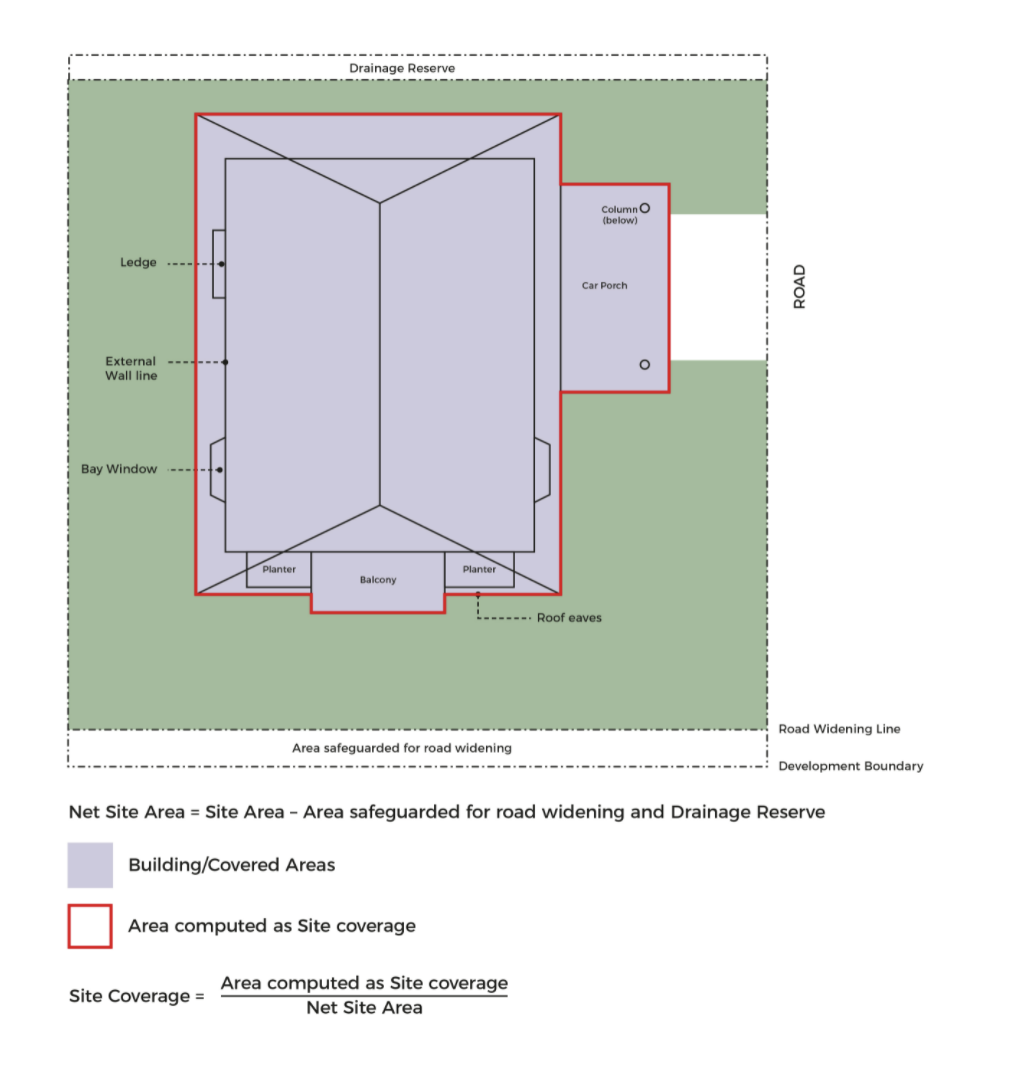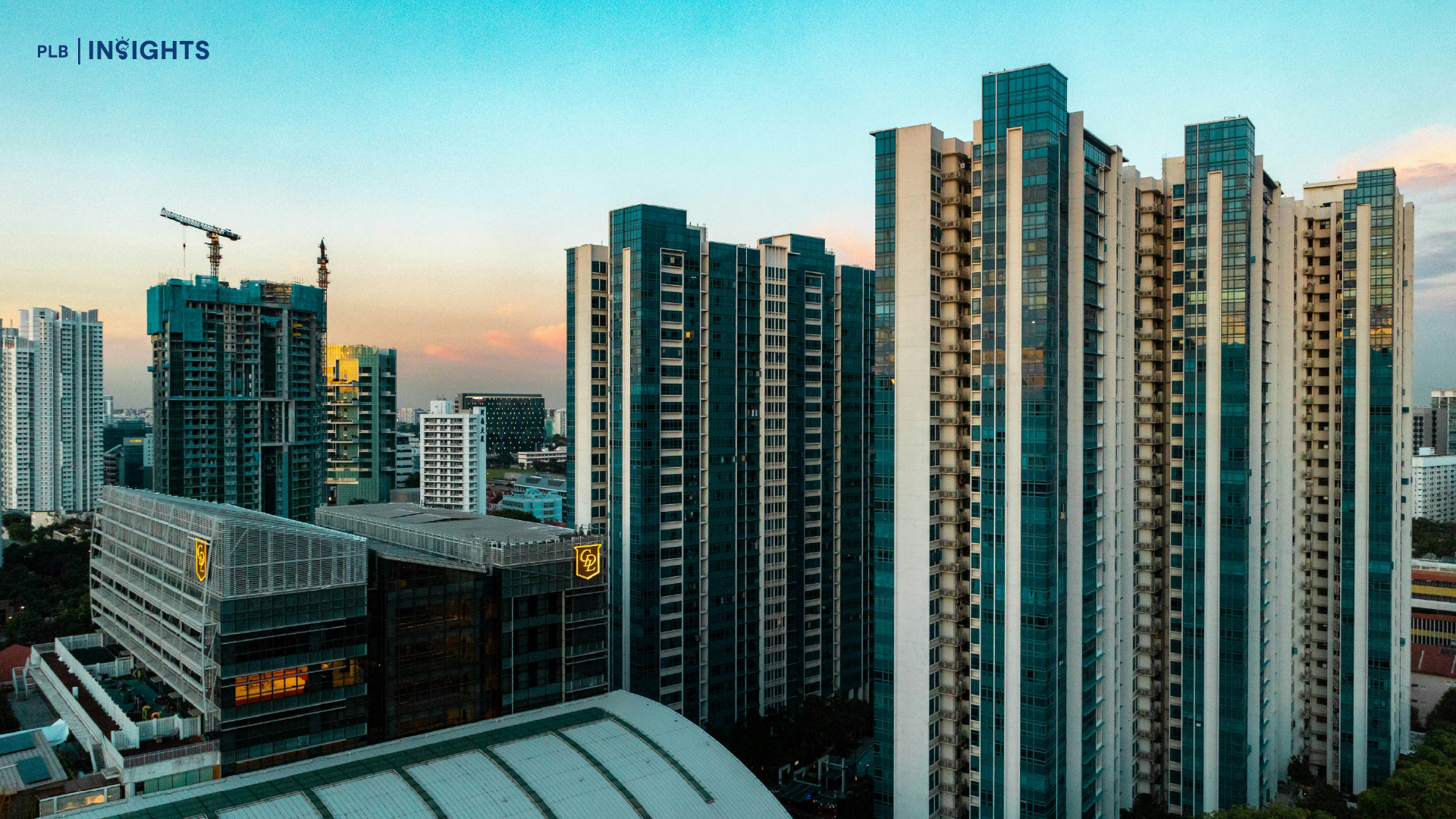
Many times in real estate, there are a lot of acronyms being thrown around that fly over your head, and you have to end up googling them on the spot (which may be why you are here now). Within the landed property realm, you will hear terms like land area, built-up space, plot ratio and more, which to the untrained ear sounds all a blur. Here we will cover what these important terms mean and how they can help you in purchasing a landed property in Singapore.
Land Area
It goes without saying that the land in Singapore is scarce, and with a rise in population, it is no wonder that land is so expensive. Hence ‘Land Area’ gets thrown around the most, because it is the base where you can calculate your built-up area and any other statistics for. The general definition of land area would be the total amount of land you are purchasing, hence the larger it is, the bigger the price tag – which is as straightforward as it gets.
Site Area for Condominiums
For condos, we refer to the site area as the entire land size of the condo project. For the individual unit, the term “square feet” is used to communicate the size of the unit you are purchasing.
If you know the land area and plot ratio (that will be covered below) of the land of the ENTIRE condominium, one can also calculate the estimated prices of condominiums even before their launch date. Per square feet (PSF) price is calculated by dividing the purchase price of the land by the land area. Whereas per square foot per plot ratio (psf ppr) is used if the condo is fully built-up to its permissible plot ratio. Let’s try this formula with Normanton Park condominium (PSST – we give you the lowdown on Normanton Park here).
Normanton Park has a land area of 660,999 sq ft and was sold for $830.1 mil and another fee of about $283.4 mil was also incurred to redevelop the site to a gross plot ratio of 2.1. This totals to a bid of $1.34 bil and an inclusion of $712.6 mil consisting of land financing, marketing and construction cost estimates.
$1.34 bil + $712.6 mil / 2.1 plot ratio / 660,999 sq ft = $1,482 psf ppr
Thereafter, you can factor in an additional 15-20% to the psf ppr due to developer mark-ups and you can derive at an estimated cost for any unit in that development.
Land Area for Landed Property
It’s a whole other ball game when we talk about the land area for landed property. Usually home owners build their house only on a fraction of the land area as they want to reserve space for a car porch, swimming pool and other amenities that you are free to customise for yourself when you have such a huge plot of land. The possibilities are endless – a glamping site, cactus garden, or better yet, a mini chicken farm!
Guidelines
Starting with the smallest minimum land size available for landed properties, Terrace I homes come at a minimum of 80 sqm while Terrace II comes in at 150 sqm. You can check out the average size through our home tour video of this Inter-Terrace on Carpmael Road of 1819 sq ft, which gives you a solid additional 200 sq ft for this plot of land.
According to URA, there is a minimum plot size of 200 sqm for semi-detached houses which translates to approximately 2153 sq ft. An example to illustrate this would be in one of our latest property videos on Sennett Avenue.
This sprawling semi-detached has an extremely long depth of 40.1 metres, which gives you a land size of 5,220 sq ft which is a rarity especially in that area. To put that into perspective, most of the freehold properties in the vicinity have a land size of around 3,000 sqft to 4,000 sq ft.
For Detached Homes or Bungalows, the minimum land area is twice that of semi-detached, situated at a minimum of 400 sqm which is approximately 4306 sq ft. And if we are talking about the big leagues for Good Class Bungalows, the minimum would be 1,400 sqm, which is a whopping 15,069.47 sq ft (talk about generous!)
An overview of the minimum land size is as shown below:

Information courtesy of URA
For more information on the types of landed properties that are available for purchase, you can check out our article on that here.
Built-Up Area
When we talk about landed properties, there is always talk about the number of storeys that can be constructed. But before you start building your own skyscraper, there are restrictions on how many levels you are allowed to build, which is the built-up area. It is commonly seen in marketing of landed bungalows where the land size is 3,000 sq ft, but the built-up area of the house is more than that, which allows you to have more space upwards.

Example of Built-Up Area
That being said, there are also the restrictions on how many levels you can build, despite knowing the built-up area of your property. The easiest way would be to go to URA Space website and enter in the particular postal code of the property you are looking at. In the example of this Semi-Detached on King’s Close that we visited a few weeks ago, the built-up area is 2,583 sq ft for a land area that is 5,036 sq ft.
The owners have maximised the built-up area by building it into a 2 and a half storey home, which is the maximum building height allotted, which is also reflected in the URA map service website shown below.

Example of URA Space Master Plan courtesy of URA
Hence it is important to note that the built-up area differs based on the land plot allowance from URA, so it’s imperative to check with the map service for the most updated restrictions, or to check with your friendly property agent.
Gross Plot Ratio
Gross Plot ratio (or GPR), informs you on how intensive a plot of land can be used for developments. Two plots of land with the same area could vary in price should their plot ratios be different, which could be the difference between a great investment or a loss in the long term. When you head over to URA Space, you’ll spot something like this. Zoom in, and you’ll notice the numbers allocated for each land plot.

Example of URA Space Master Plan courtesy of URA
The higher the number, the land plot will most probably be built higher, which you can see in the table below, from URA. If two plots of land have similar areas (on the URA map), but differing plot ratios, it usually means that one will be denser or taller than the other.

For those with sharp eyes, you may realise some differences in the plot ratio across Singapore, and these are affected by the surrounding street controls and technical height controls. For example, houses in the Paya Lebar area have a low building height due to the airspace restrictions for Paya Lebar airbase (which will be eased when the airbase gets decommissioned and relocated).
Gross Floor Area
Gross Floor Area (GFA) refers to the total constructed area of a property including the external walls, excluding any unsheltered areas such as front porch, roof, gardens or parking areas. Why do you need to know this? The government uses plot ratio to control land use intensity in certain areas and is updated every few years according to the URA Master Plan. Should there be updates, this is how developers analyse which plots of land are under utilised and can develop it into a bigger estate for sale.
To find the GFA, a simple calculation will be to multiply the plot ratio by the site area.
Gross Plot Ratio X Site Area = Gross Floor Area
An example of this is more common for condominiums with the example of Park Nova, redefining the standards of luxurious living. With a land area of 4,281 sqm or 46,080 sq ft, the former Park House site has a plot ratio of 2.8. At that time, Park House had only 14 storeys but has been redeveloped into Park Nova which now has 22 storeys although the plot ratio has stayed the same at 2.8. The former property on the land has not been utilised to its fullest potential, as the utilised GFA is still far off from the maximum floor area that can be used.
Plot Ratio: 2.8
Land area: 46,984
Maximum GFA: 131,555

Site Coverage
This term will only be used for Bungalows and is computed based on the total area of the building and coverage of building features as long as it’s raised more than 1 metre above ground level when viewed from above.
Before you start hacking away, take note that the site coverage of your house cannot exceed more than 50% for bungalows, and 40% for Good Class Bungalows.

Information courtesy of URA
A&A
In many of our home tour videos, you will hear this phrase A&A being thrown around. This actually refers to Additions and Alterations works, which are renovation works that do not disrupt the building’s foundation or current structure. Some common A&A works include replacement of walls, replacement of the roof or addition of an attic. Anything more than that will then be regarded as Reconstruction, which is when the new GFA of the house is slated to be 50% or more of the original, or if the replacement or removal of walls amounts to 50% and more of the original.
There is a difference between the two as the submission procedure for A&A and Reconstruction varies which will amount to different processes and fees.
Conclusion
There are many factors to consider when purchasing a landed property beyond just its land size and knowing these acronyms can help when looking at property listings and talking to agents. Being informed means that you can do your own research, make better decisions for yourself and understand your property better. Want to learn more about landed homes in Singapore? Check out our Landed Homes series here, or contact us for more information to help you along your property journey!








